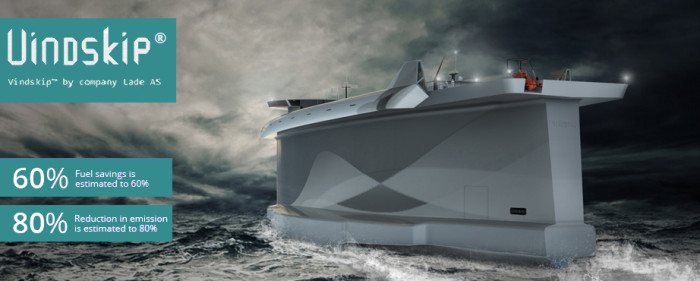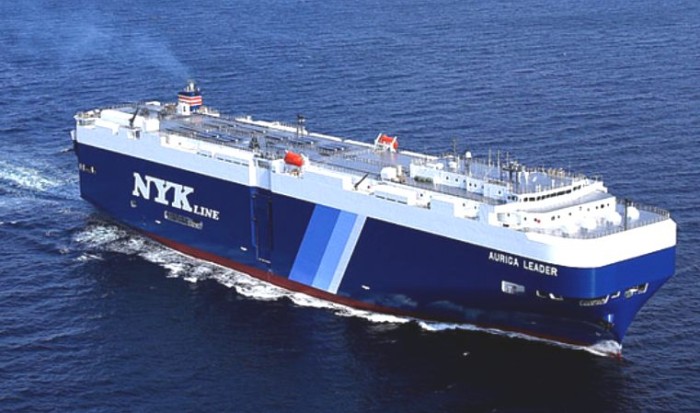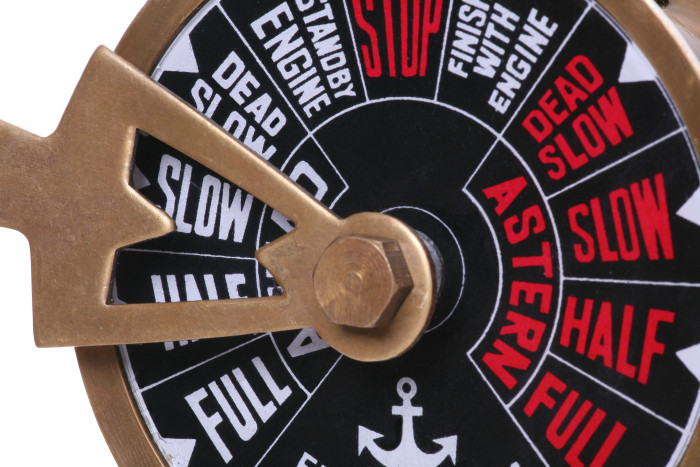When we think about cargo emissions and “going green,” transportation is one of the first industries we blame. Environmental advocates have long pointed to our modern reliance on automobiles and airplanes as a primary culprit in our unintended war against the ecosystem. Certainly planes, trains, and automobiles play a crucial role, but this trifecta is missing one crucial form of travel: ships. Other than regular cruise goers, most people don’t travel via ocean anymore, which is why ships so easily go unnoticed. But massive ocean liners and cargo vessels are the most popular choice for international shippers, and their role in transoceanic transport has only risen in recent years.
Saving Two Birds with One Revolution

Water travel offers some distinct advantages in shipping, including the ability to transport truly massive amounts of cargo in a single journey. In fact, the largest haulers can now carry over 18,000 containers at a time. But there are also two important cons: cost and energy consumption. Thankfully, some of the industry’s most creative thinkers have taken up the mantle of addressing both problems in one fell swoop. To these innovators, “going green” is an investment in more ways than one.
According to the International Maritime Organization, global shipping accounts for approximately 3% of harmful gas emissions worldwide. That may seem meager at first glance, but when you consider the steady growth rate of the shipping industry and the extreme toxicity of ocean liners – which burn low-grade fuel and emit staggering amounts of sulfur – the importance of a “green revolution” becomes clear. To put this in perspective, the largest 15 ships in 2009 were estimated to be emitting the same quantity of greenhouse gases as 760 million cars. Now that’s not such a paltry number!
The Task at Hand
So what can the industry do? Some more obvious changes are already well under way. For example Maersk, one of the biggest players in the game, has begun designing its ships more efficiently. This means building vessels that can hold more cargo and make fewer trips, rely on more efficient engines, and employ waste heat recovery systems that can cut costs long-term.

Photo credit: ladeas.no
But while these solutions serve as a step in the right direction and offer both cost-cutting and environment-saving benefits, they aren’t nearly enough. Truly turning the industry into an eco-friendly business will take a complete overhaul of our current way of thinking. Fortunately, many innovative designs are already in the works. For example, the Dutch company Dykstra is hard at work building a sail-powered hybrid container ship, while others have postulated turning the ship itself into a sail. The Vindskip (or “Wind Ship” in Norwegian) is ergonomically designed to capture the power of the wind the same way a traditional sail would. While still in the idea stage, the entrepreneur behind the design claims this modern-day sailboat could lead to fuel savings of 60% and emission reductions of up to 80%.
Creative Minds Think Big
Other natural energy inventions include a solar-powered ship, which could be so effective that it almost seems unbelievable that manufacturers haven’t been employing this method for years. After all, the ocean attracts a large amount of sunlight and is largely free from obstructions. The cloudy days and crowded skylines that render the use of solar panels ineffective in some populated land regions wouldn’t carry the same clout on the open seas.

Auriga Leader by NYK Line
One such ship, the M/V Auriga Leader, is currently docked at Long Beach in California (and where else besides the Golden State?). The ocean liner sports an impressive outfit of solar panels – 328, to be exact – and powers the ship’s main electrical grid. And NYK Line, the Japanese shipping company behind the solar project, hopes to outfit even more ships in a move to reduce the industry’s reliance on dirty fuel while simultaneously cleaning up our airways. While the panels only produce about 10% of Auriga’s total energy needs, there is still much to celebrate. Vessels use an incredible amount of energy even while docked, and the largest oil tankers drink up as much as 8 megawatts just while pumping oil off the ship. Eight of anything doesn’t exactly sound foreboding, but that figure is actually the equivalent of 5,500 homes! In such cases, a 10% reduction in energy use could make a real impact. [VIDEO] Learn more about the Auriga Leader’s Innovations
Other potential innovations include a line of liquefied natural gas (LNG)-propelled ships, 3D printers that can quickly and efficiently construct parts, and even a “low-friction” paint. This unique paint partially mimics tuna skin (and these fish were in fact a muse for the invention) and acts as a membrane that makes vessels extremely slippery. Ships that can cut through the water with less resistance will require less power to operate and will move more quickly. A number of other lubrication tactics are on the drawing board as well, including a set of fans that will blow bubbles to the bottom of an ocean liner’s hull and help it move more effortlessly through the water.
The Human Factor
Lastly, some executives have considered the need for behavioral changes within shipping lanes. For instance, in addition to conjuring up new designs, shippers might be able to save the environment just by slowing down. Research suggests that dropping top speeds down by just two knots (from 18-19 knots, on average) could translate to a 5% savings in both money and emissions. Of course, the trade-off is that consumers will have to settle for somewhat slower delivery times, but in the long run it’s likely to pay off. Instituting speed limits on international routes would take little upfront financial investment and shipping companies could see almost immediate benefits.

Ruth Kelly, who is currently the Transport Secretary for Great Britain, has dubbed this set of environmental issues “the most urgent and serious” challenge for the industry. Similarly, Martyn Williams, a Senior Campaigner for “Friends of the Earth,” noted that despite our preoccupation with air and land travel, the role of ships in environmental change is becoming “increasingly significant.” Kelly and Williams have both supported emissions guidelines and reduction incentives in Britain, and if such legislation finds success it is likely to spread elsewhere. Ultimately, the International Maritime Organization may take the lead in establishing a list of guidelines that carry global impact.
So far, these innovative new ideas have come from all across the globe. Asian, European, and North American companies all seem to consider this cause worthy of collaboration. Every pitch carries a different level of plausibility and efficacy, but the fact that so many businesses are willing to spend green to save green makes one reality clear: the future of our environment is a worthy investment.
What’s your favorite “green” cargo ship innovation? Will we ever see a cargo ship completely powered by solar panels or wind? Let us know your thoughts in the comments below!


One Comment on ““Shippers are “Going Green” to Save the Planet and their Profits””
Hopefully one day all of Europe will pass similar legislation like USA did with the Vessel General Permit.
http://water.epa.gov/polwaste/npdes/vessels/Vessel-General-Permit.cfm